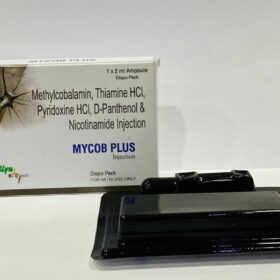- Your cart is empty
- Continue Shopping


MADXONE TZ Injection
The injection you mentioned contains two active ingredients: ceftriaxone and tazobactam.
The injection you mentioned contains two active ingredients: ceftriaxone and tazobactam. Here’s a brief description of each component:
- Ceftriaxone: Ceftriaxone is a broad-spectrum antibiotic belonging to the cephalosporin class. It is effective against a wide range of bacteria and is commonly used to treat various infections, including respiratory tract infections, urinary tract infections, skin and soft tissue infections, and certain types of meningitis. Ceftriaxone works by inhibiting the growth and spread of bacteria.
- Tazobactam: Tazobactam is a beta-lactamase inhibitor that is often combined with ceftriaxone to enhance its spectrum of activity. Beta-lactamase enzymes are produced by certain bacteria and can break down and inactivate antibiotics like ceftriaxone. Tazobactam inhibits these enzymes, allowing ceftriaxone to remain active against a broader range of bacteria.
The combination of ceftriaxone and tazobactam in an injection is often used in the treatment of severe bacterial infections that may require a stronger and broader antibiotic coverage. The specific indications, dosages, and administration guidelines for this injection may vary depending on the type and severity of the infection being treated, as well as other individual factors.
It’s important to note that antibiotics should only be used under the guidance and prescription of a healthcare professional. They should be administered in the appropriate clinical setting and according to the recommended guidelines to ensure proper treatment and minimize the risk of antibiotic resistance.
Related products
Working hours
Follow us:
© 2023 All Right Reserved by Lambert. Design & Developed by TECHGLIDE


